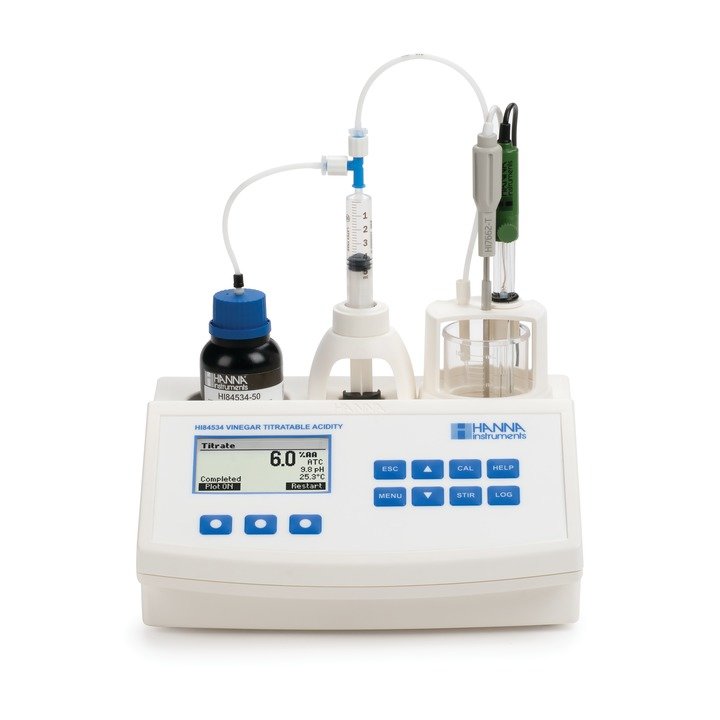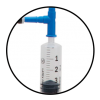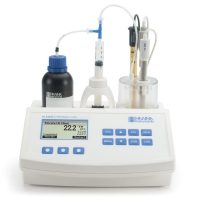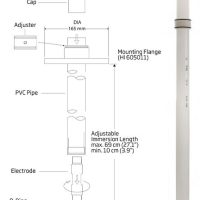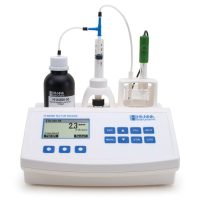Description
The HI84534 is a low-cost, easy to use automatic minititrator and pH meter designed for the rapid and accurate analysis of Total Titratable Acidity in Vinegar. The HI84534 minititrator is a valuable tool because of its ability to eliminate subjective factors including color indicators, errors in mathematical calculations or erratic titrant additions, it will quickly become a valuable acidity analysis tool of vinegar.
The HI84534 incorporates a precise piston dosing system, which allows for a highly accurate determination of the amount of titrant used. It is also capable of dynamic dosing, making testing both faster and more accurate. Pump calibrations are performed with the provided Hanna standard and help assure the accuracy of the measurement. An intuitive interface makes the instrument simple to use and the dedicated HELP key guides the user through set-up, calibration status, and troubleshooting.
This mini titrator includes a pre-programmed analysis method based on the Standard Methods of Water and Wastewater Determination. It uses a powerful algorithm which analyzes the shape of the electrode response in order to determine when the titration reaction has reached completion. This mini titrator is also designed to be used as a benchtop pH/mV meter. The CAL Check function not only ensures an accurate pH reading when the HI84534 is used as a pH meter but also an accurate titration since the endpoint is determined by a set pH value.
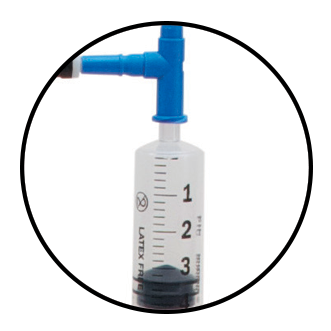
Piston driven pump for accurate dynamic dosing

Complete with glass double junction pH electrode

Pre-standardized titrant and pre-measured reagents
Details
Vinegar is made when acetic acid bacteria is added to an alcohol beverage such as wine. The bacteria will eat the ethanol and produce a tart, pungent liquid know as acetic acid. The
acetic acid concentration in vinegar typically ranges from 4 to 9 % (w/v). The pH of vinegar is typically between 2.5 to 3.0, depending on the acetic acid concentration. Vinegar can be made out of anything that has alcohol (ethanol) in it, including wine, beer, and hard cider. The type of vinegar depends on what liquid the ethanol has been fermented in. White vinegar is made a vodka type liquor made from grain, while apple cider vinegar is made from apples and balsamic vinegar is made from grape must. Outside of the United States popular vinegars include rice, coconut and cane. Vinegars are commonly used in food preparation, medicine, agriculture and in cleaning solutions.
The titratable acidity of vinegar is determined by titrating the sample with a strong base to a fixed pH. The end point is determined by the potentiometric input and the results are typically expressed as % (g/100mL) or g/L acetic acid. The HI84534 minititrator method is based on the Official Methods of Analysis of AOAC International.
Features
Double Junction pH Electrode
The HI84534 is supplied with the HI1131B refillable, double junction, combination pH electrode. By design, the HI1131B has a spherical tip for use in aqueous or liquid solutions. This versatile electrode provides a wide surface of contact with a sample and is ideal for direct measurements or titrations in the beverage industry.
Good Laboratory Practice
The HI84534 offers comprehensive GLP information including date and time of the last pH electrode and dosing pump calibrations. Tracking calibrations are critical to have confidence in the results obtained from titrations. The GLP data is stored along with any logged readings.
Piston Driven Dosing Pump
The heart of the HI84534 is the piston driven burette pump. This type of dosing system uses a motor in which each dose is very precisely controlled and the volume dispensed is accurately determined. This titrant is dynamically dosed, where titrant is delivered in larger doses at the start of the titration and smaller doses near the end point. With larger doses in the beginning of the titration, the speed of the titration is increased, where smaller doses near the end point allow for more time for the titrant and analyte to react. Smaller doses also prevent the over titration of a sample and a more accurate determination of titrant volume used.
Automatic Stirrer
The built-in stirrer is automatically maintained at a speed of 600 rpm, regardless of the viscosity of the solution being titrated.
Easy-to-Use Interface The HI84534 has an intuitive user design with clearly defined keys and a large screen that is easy to navigate. The meter has a built-in tutorial mode that, when enabled, will walk the user step by step through the titration process. A dedicated HELP key is always available to allow access to content-specific information during both calibration and titration.
Procedure Warnings Users are warned if there is an error in procedures such as the titration exceeded the maximum volume of titrant.
Graphic Mode This mini titrator displays in-depth data during titration, including a real-time graph of the titration curve.
Log-on-Demand
The HI84534 allows for data logging of up to 400 samples: 200 titration results and 200 pH/mV readings. Data can be stored and exported to a USB drive or a PC using the USB connection.
pH/mV Meter In addition to being an automatic titrator, the HI84532 also can be used as a pH/mV meter. As a pH meter, it has many features of a professional grade benchtop including automatic calibration up to three points with four available buffers, a 0.01 pH resolution, accuracy of ±0.01 pH, automatic temperature compensation and comprehensive GLP data.
CAL Check™ Accuracy is always ensured with Hanna’s unique CAL Check feature, which analyzes the response of the electrode during the calibration process. Based on electrode response in the buffer, indicators are displayed on screen to alert the user of potential problems during calibration. These indicators include Buffer Contaminated, Electrode Dirty/Broken, and overall probe condition. The CAL Check function not only ensures an accurate pH reading when the HI84532 is used as a pH meter, but also an accurate titration since the endpoint of a titratable acidity titration is determined by a set pH value.
